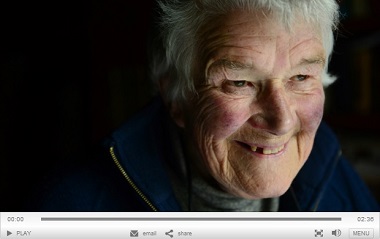Life
| 1931- [Dervla Mary]; b. 15 Sept. 1931, in Lismore, Co. Waterford, the only child of a local librarian and his wife, with grandparents who were politically active in 1916 and after, as were her own parents - her father being jailed for possession of rifle in the Civil War; his parents having met in Poland, as solitary travels; she was taught to swim by her father on the Blackwater and swam independently there during early teen-age; the family was accustomed to listening to classical music with family on BBC Third Programme; she planned to cycle to India at age of ten on receiving an atlas and a second-hand bicycle; received a letter from Dr. Kathleen Farrell, in whose house Charles Kerins (IRA Chief-of-Staff) was arrested, telling her of his brave death by hanging, Dec. 1944 [see note]; ed. Ursuline Convent, Waterford, but withdrawn from school to nurse her mother, who suffered from rheumatroid arthritis, in 1945 [aetat. 14], ultimately sharing a bedroom with her; suffered the death of her father, Dec. 1960 - of nephritis having contracted ’flu and insisted on keeping a work-related travel appointment; cared for her mother during the last year while ‘living on whiskey and cigarettes’; released by her mother’s death, Aug. 1962; |
|
paid for trips to France and Spain with contributions to The Irish Times; set out travelling on bicycle soon after the death of her mother in Aug. 1962 [‘I stood at the threshold of an independent life and felt, that night, my parents’ blessing on it’]; issued Full Tilt (1964 [var. 1965]), relating her 4,500-mile journey to in India; met Penelope Betjeman, wife of John Betjeman, in Delhi (‘the starling apparition of Dervla cycling by’) and put in contact with John Murray; cycled from Lismore to London to meet the publisher, locking her bicycle to the railings; issued Tibetan Foothold (1966), and then The Waiting Land (1967), set in Nepal; trekked in Ethiopa for four months, 1966-67, and issued In Ethiopa with a Mule (1968) [var. 1969]; she decided became single parent in London and chose Terence de Vere White as the father - otherwise ‘clandestine affair’ - had a dg., Rachel, b. 1968; issued On a Shoestring to Coorg: An Experience of Southern India (1976), recording a journey made on bicycle with her infant daughter [aetat. 5] from Ireland to the sub-continent - with whom she continued to travel up to her Cameroon trip of 2006 [aetat. 18] - though restricting herself to Europe until Rachel was 14 [1972]; |
| issued Where the Indus is Young (1977), on Baltistan; A Place Apart (1978), a record of Northern Ireland which includes a plea for the abandonment of Articles 2 & 3 of the Irish Constitution; winner of the Christopher Ewart-Biggs Memorial Prize; Wheels Within Wheels (1979), an autobiography [‘I stood at the threshold of an independent life and I felt, that night, my parents’ blessing on it’]; issued Race to the Finish (1982), on the arms industry and her first politically-minded book; spent a week in Boston with anti-nuclear movement having passed Three Mile Island during melt-down crisis, 1982 while returning from Peru; issued Eight Feet in the Andes (1983); lived in Bradford an Birmingham in inter-racial communities, and issued A Tale of Two Cities (1987), largely on British race relations, including an account of the Handsworth Riots; issued Cameroon with Egbert (1989); issued Changes the Problem: Post-Forum Reflections (1984); issued South of the Limpopo (1997), on South Africa; planned ot visit Shri Lanka; issued Visiting Rwanda (1998), publishwed by Lilliput in Dublin - since Murray refused to publish it; |
| issued by One Foot in Laos (1999) - back with Murray; also Tibetan Foothold (2000), based on a side-trip from Delhi in the hot season; issued Through the Embers of Chaos: Balkan Journeys (2002); issued Through Siberia by Accident (2005), recording a trip made at seventy-three, with a catalogue of accidents on that and previous outings; issued Winterland: A Journal Beyond the Urals (2006) - on her intended destination; visited Cuba with her dg. Rachel and three grand-dgs. - Rose, Clodagh, and Zea, 2005, and issued The Island that Dared (2008), on that country after two subsequent trips; Murphy has often expressed strongly antagonistic views towards economic globalization and the activities of the World Bank, the IMF, and the World Trade Organisation; also opposed to Nato and speaks out against nuclear power and climate change; her contribution to the Northern Ireland crisis was a plea for the withdrawal of the constitutional articles of the Republic claiming sovereignty over the territory of Northern Ireland; as a travel-writer she has been inspired by inspired by Mungo Park, Mary Kingsley, Isabella Bird, and Freya Stark; |
| keeps a daily journal on her travels; gave an anniversary address at Sustrans (“Sustainable Transport”), Cowcross St., London EC1M; issued A Month by the Sea: Encounters in Gaza (2013), relating to her stay in Palestine during Operation Cast Lead; latterly published by Eland; lived at “Clairvaux” in Lismore; interviewed by Rosita Boland at RTE at 82; “Who is Dervla Murphy?”, a documentary with interviews with Dervla, Michael Palin and others, was made by Martina McGlynn and Garret Daly in 2016, lives in a former-town market in Lismore, the rooms being unconnected and unheated. DIW OCIL |
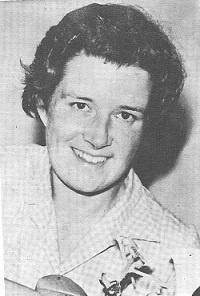 |
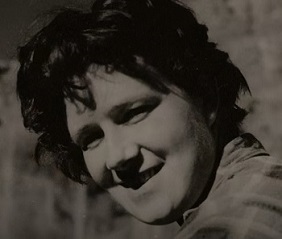 |
| Collection of Thomas McCarthy | “Who is Dervla Murphy?” (Econ., UTube) |
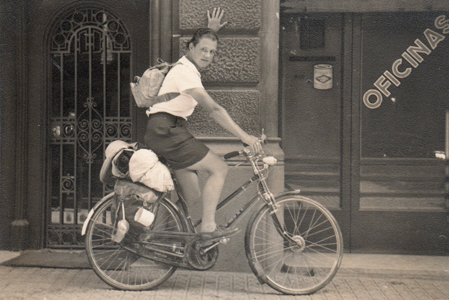 |
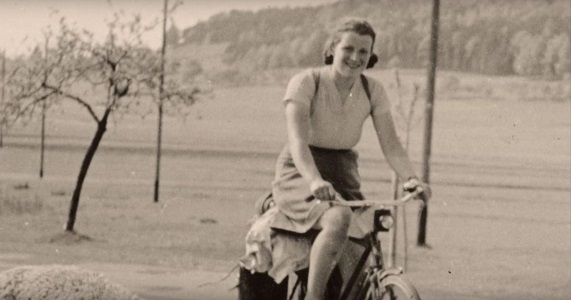 |
[ top ]
Works| Travel | |||
|
|||
| Miscellaneous | |||
|
|||
| Journalism (incls.) | |||
|
|||
|
top ]
Criticism
‘The Crazy Whitey on the Bike’ [interview article], in Books Ireland (Sept. 1997), pp.193-97; Rory Brennan, ‘Wham Bam’, review of Through Siberia by Accident, in Books Ireland (Summer 2005), pp.1511-52; Rosita Boland, ‘The Light of Lismore’, interview in The Irish Times (20 Feb. 2010) [[Saturday Interview]; Nicholas Wroe, ‘Free wheeler’ [interview], in The Guardian (15 April 2006) [online; accessed 21.08.2011]; Colm Tóibín, ‘A passionate witness of life and death in Gaza’, review of A Month by the Sea, in The Irish Times (4 May 2013), Weekend, p.11 [see extract].
See also Marion Tinling, ‘Dervla Murphy, 1931- ’, in Women Into the Unknown: A Sourcebook on Women Explorers and Travelers (Westport, Connecticut: Greenwood Press 1989), pp.189-95; Sonia Melchett, ‘Dervla Murphy’, in Passionate Quests: Five Modern Women Travellers (London: Faber & Faber 1992), pp.7-55, and remarks on Murphy in Michael Cronin, Across the Lines: Travel, Language, Translation (Cork UP 2000).
[ See the Dervla Murphy website - accessed 21.08.2011. ]
| Interviews ... |
|
| —All cited on Dervla Murphy Wikipedia page - online; accessed 21.08.2011. |
|
|
[ top ]
Commentary
Jeremy Gavron, review of Visiting Rwanda (1998), in Times Literary Supplement (Dec. 1998, p.30); note that the book was written when Murphy holidayed with her aid-work daughter, also in her trade-mark diary format; looks up a Tutsi friend at Mbarara in W. Uganda, to find that she has been murdered with her son and two brothers; sets out to walk fifty miles to Kigali but takes lift from passing missionary; quotes Murphy: ‘Genocide is like a comet, it has a tail’; ‘someone was being murdered - nearby, beyond the wall of my hostess’s garden. The killing took a long time. It wasn’t a shooting. I won’t soon (or ever?) forget those sounds; believes that three-quarters of a million killings could have been prevented after the first day by the presence of 5,000 UN troops whereas the UN actually withdrew 270 troops at the instance of the US.’
Colm Tóibín, ‘A passionate witness of life and death in Gaza’, review of A Month by the Sea, in The Irish Times (4 May 2013), Weekend, p.11: ‘The Irish travel writer Dervla Murphy is known for her fearlessness and for being intrepid, but there has also been at the core of her work a kind of moral seriousness. In her work there is an urge to investigate how others live – and how she herself responds to the unfamiliar – as a way of suggesting how we might, as a species, be improved, even if we cannot be perfected. [...] Although the detail of life in Gaza now is at the core of this book, Murphy also displays a sharp sense of history, geopolitics and local politics. She writes with care and subtlety about the internal politics of Hamas, for example. She notes that Gaza for many centuries, because of its location, was “one of the Near East’s most cosmopolitan cities ... Always there was much fighting, trading and building; not until the 20th century did the Strip lose its cultural and commercial significance.” At the time of her visit “75 per cent of families were wholly or partly dependent on food aid”. / The grief, however, ceases to be sterile under Murphy’s searching and forensic gaze. Her pages are filled with accounts of the vast suffering of the people she encounters: the deaths, the terrible injuries, the constant fear, the powerlessness, the sheer vulnerability, the idea that no one in this small stretch of land has been spared. There is a sense of people in Gaza locked into their territory as though it were the dungeon of a prison. Most of Murphy’s indignation is directed at the Israel Defence Forces, but often too at the international community, not only the United States but also the European Union. / Her own sense of fierce individuality, which has made her such an exact noticer of people and things, allows her to seek out the precise story of each individual. There are moments when you hold your breath at the extent of the suffering and other moments where a small story is given its full due, such as a man “worriedly reading text messages” finding that his mother is in dire need of a drug that is not being allowed into Gaza because of the blockade.’ Tóibín calls the book ‘A blueprint for a new way of thinking about the plight of the people of Gaza.’ (See full-text copy in RICORSO Library, “Criticism > Reviews”, via index, or attached.)
[ top ]
Quotations
A Place Apart (1978): ‘I suppose I am now an agnostic humanist, though I don’t much like the clinical sound of that. Nor am I sure of its accuracy, unless the word humanism may be restricted to just one of its dictionary meanings - “doctrine emphasising the importance of common human needs and bastention from profitless theorising” [e.g., breakfast-time discussions about Transubstantiation, Predestination and so forth]. And unless the agnosticism leaves me free to believe - or at least to feel that I would like to believe - in some immaterial influence pervading the universe and entitled to reverence. I have an ineradicable respect for all the great religions and even for some of the little cranky ones, trying though these can be.’ (p.15; and see note, infra.)
African life: Dervla Murphy, review of The Shadow of the Sun: My African Life, by Rysard Kapuscinski, in The Irish Times (16 June 2001) [Weekend Review], notes Kapuscinski’s ‘excessively dismal’ vision of pre-colonial Africa remarking that Victorian travels in Africa rarely encountered food shortage, writing: ‘Much as we need to have our affluent noses rubbed in the desperation of distended shanty-towns, drought and battle-stricken countrysides, we also need to be reminded that given a fair chance Africans are perfectly capable of running their own show, competently and honestly. It’s when they import their show, and try to run it, that things come unstuck.’ Remarks on ‘tallish’ stories in the book and ends, ‘[e]ven deep-thinking males like [the author] have their Boys’ Own fantasies.’ Note that Rysard Kapuscinski contributes ‘The Heart of the Cobra’ to The Irish Times (2 June 2001), and see also ‘Dark Side of the Sun’, interview with Penelope Dening, The Irish Times (7 July 2001, Weekend), p.4.
Changing the Problem: Post-Forum Reflections (1984), a pamphlet: ‘By successfully establishing an Independent NI, the British and Irish governments could release the Northern Irish into a wholly new world where the instinct of self-preservation would compel them to abandon the cultivation of sectarian division and concentrate instead on fostering that unity without whcih their new State would fall apart. Freed of the destructive pulls of the London and Dublin magnets, the two communities would soon find their interests naturally converging. (p.17l; quoted in John O. Whyte, Understanding Northern Ireland, OUP 1990, p.222.)
An excerpt from Full Tilt by the Irishwoman who went on to become a beloved and prolific travel writer. |
|
| Available at Scroll-in - online; accessed 02.12.2020. |
[ top ]
References
Bernard Share, ed., Far Green Fields, 1500 Years of Irish Travel Writing (Blackstaff 1992), gives extract from Full Tilt (John Murray 1965).
John Quinn, ed., A Portrait of the Artist as a Young Girl ( [RTE 1985; rep. 1986; Mandarin 1990), contains an autobiographical piece (pp.111-130).
[Jan] Morris & Larry O’Connor, eds., The Virago Book of Women Travellers (London: Virago 1994), contains remarks that Dervla Murphy, accompanied by a sometimes truculent Rachel, 14 at the time, muddles through Madagascar (see Irish Times review, 17 Sept. 1994).
Katie Donovan, A. N. Jeffares & Brendan Kennelly, eds., Ireland’s Women (Dublin: G&M 1994), contains extract from Wheels Within Wheels (1979).
John Murray, publisher’s notice attached to Cameron with Egbert (London: John Murray 1989), lists inside Full Tilt; Waiting Land [Nepal]; Ethiopia with a Mule; On a Shoestring to Coorg [S. India]; Where the Indus is Young [Batistan]; Place Apart [N. Ireland]; Wheels within Wheels; Race to the Finish? [nuclear stakes]; Eight Feet in the Andes; Muddling Through Madagascar; Tales of Two Cities.
[ top ]
Notes
A Place Apart (1978) gives a disputed account of Bloody Sunday, 1972: ‘The Bloody Sunday myth has become so valuable a weapon against the Brits that anyone seeking to blunt its cutting edge will not be popular. Indisputablly, none of the thirteen civilians shot dead by British paratroopers in Derry was handling a gun or bomb when shot. Equally indisputably - and by now this is common knowledge - the Provos had made a careful plan to attack the William Street barrricade; two senior volunteers were armed and waiting in a hosue to shoot at the army; and the paratroopers saw an armed group racing out of Glenfaddagh Park, where the Provos had parked a car containing guns. The “myth” versions of the tragedy does not includes these details. If the Provos wanted to make sure that no innocent civilians were shot during that illegal march they should have kept themselves and their weapons out of the way.’ (p.173.)
Further: The assassination of Christopher Ewart-Biggs, British Ambassador to the Republic, is treated at pp.183-84: ‘Among extremists of both communities disappointment was frequently revealed at the failure of the assassination to damage Anglo-Irish relations. There was an almost childish sulkiness involved. Catholics commented sourly that after the grovelling public speeches of various Irish cabinet ministers [...] the “Free State” might as well rejoin the UK. And Loyalists commented, equally sourly, that Britain had lost a wonderful opportunity to show the world what she really thought of those Fenian bastards.’ (p.183.)
Anew McMaster’s fit-up production of Hamlet, played at Lismore, so excited Dervla when she saw it as a teenager that she cycled round the countryside most of the night recovering. (See Aidan Higgins, ‘RTE Stills’, review of John Quinn, A Portrait of the Artist as a Young Girl [nine interviews], Methuen 1987, in Books Ireland, May 1987, p.85.)
‘Whitey on the Bike’, interview article, in Books Ireland (Sept. 1997), pp.193-97, in which Murphy remarks that she decided to cycle to India at age of ten, when she received an atlas and a seco.-hand bicycle; accomplished it more than at 30 years.
Visiting Rwanda (1998): Since John Murray would not publish it, the book was issued by Lilliput who had earlier published a pamphlet on Northern Ireland. (See ‘We didn’t want another genocidal war’, in Books Ireland, Sept. 1998, p.193.)
Charles Kerins, the Chief-of-Staff of the IRA following the capture of Hugh McAteer in Oct. 1942, was tried and sentenced to death for the alleged murder of Detective O’Brien - a sentence carried out by the English hangman Pierpoint on 1 Dec. 1944. After his execution, Dr. Kathleen Farrell, in whose house at 50, Upper Rathmines Rd., Dublin, he had been arrested, wrote to her niece Dervla Murphy, in whose home Charlie had also stayed: ‘There is no need to tell you that Charlie Kerins met his death with the greatest possible courage and bravery. I was allowed to visit him on Wednesday and Thursday last and he gave me courage, too. I am more sorry that you could not have seen him - he was so proud and happy to die for Ireland that one could not feel depressed - sad indeed heartbroken - but not depressed.’ In her account of the matter, Murphy told how, as a child in Lismore, Co. Waterford, Kerin scaled a 8-foot wall and crossed the backyard to her house ‘look[ing] so amiable and vulnerable’ that she felt no alarm. speaking with a Kerry accent, he called himself “Pat Carney”, and remained for some time under her parents roof before moving to the house of her aunt’s home in in Dublin. (See Republican Sinn Féin Kerry > Murder of Charles Kerins - online; accessed 20.05.2014.)
Paul Gillespie, Foreign Editor, writing in The Irish Times (26 May 2001), rebuts Dervla Murphy’ s reference to MRBI poll as ‘an example of pro-Nice deviousness’ (Irish Times, 25th May), and is answered by Murphy on June 2 with the assertion: ‘what I quoted is what The Irish Times printed [19th May]’, adding: ‘repeatedly the word humanitarian is being used to fudge the Rapid Reaction Force issue’, and further: ‘As for the terms peace-making and peace-enforcing, the brutal truth is that most armies exist - are equipped and trained - to make war, not peace’, and finally that ‘the Irish Army’s honourable reputation was linked to its not being equipped to make war, not being allied to NATO.’ An editorial explanation and justification is subtended in italics.
[ top ]
